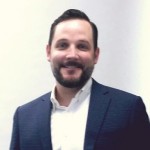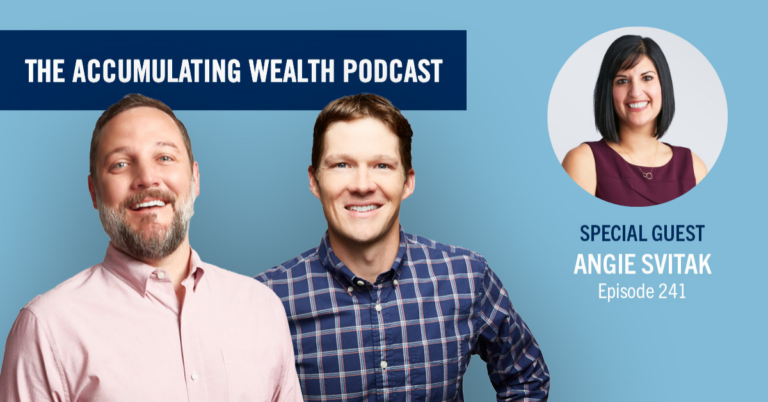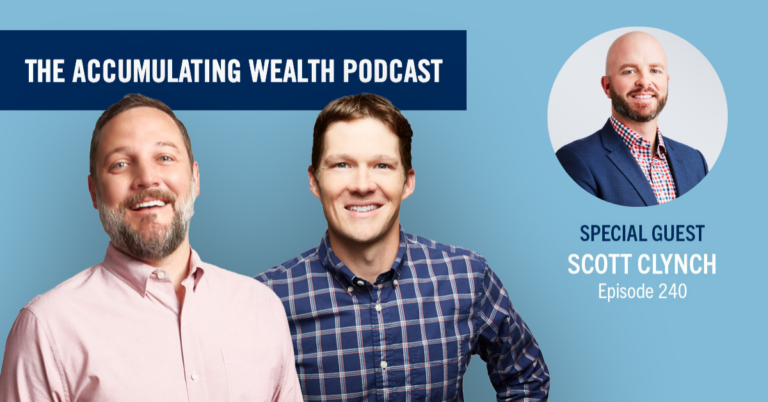
“If you don’t build your dream, someone else will hire you to build theirs.” – Tony Gaskins
You may be familiar with this popular quote that many new business owners cite as their motivation to strike out on their own. But most of them will agree that as easy as it is to connect with the sentiment behind it, what’s not easy is the journey from employee to owner. For orthodontists weighing the costs and benefits of buying in to a practice, or remaining an associate, there is, of course, a third option; but building a practice from the ground up at this early stage in your career may simply be viewed as reserved for the rich…or the insane.
Changes in the marketplace, however, have sparked new interest in this option for many young orthodontists who realize that with solid financial planning and the “never quit” attitude that got them to this point, the personal and financial rewards can be plentiful, and quite attainable.
While many advisors, including myself, have historically championed buying into practices to take advantage of having cashflow and income to tackle student loan debt and begin accumulating wealth, what we’ve seen over time is that there are fewer practices on the market. Many Baby Boomers are working longer and, therefore, holding on to their practice longer. Moreover, the market has become more saturated with buyers. Not only are new orthodontists looking for practices to purchase, but many experienced doctors are expanding and purchasing practices, which makes for a tight market. As a result, advisors and consultants are evaluating startup practices through new lenses.
Each year, our firm surveys our clients to gather important comparative data. The 2014 report showed that the average orthodontist surveyed produced $1,550,000 and had an overhead of 55 percent. This equates to approximately $700,000 of income before paying any practice debt and perks. The 2014 report also showed that the average associate orthodontist surveyed made $1,139 per day. If that associate works an average of 16 days per month, he or she will make $218,688 for the year.
Given that, the financial rewards of ownership are apparent. And in looking at the opportunity costs and other long-term benefits, what we found was that, in spite of the challenges associated with any startup, the payoff could be significant if important factors were in place.
Focus, Financial Plans and Two Firm Feet.
I met the client who we’ll call Dr. John Doe – a former Navy dentist – and his wife when he was in his last year of orthodontic residency. He came to me knowing that he wanted to start his own orthodontic practice in an older, established part of the town where he lived and had done his homework on location demographics.
He’d found that his competition in that area was limited to a few aging doctors and a clinic. He had two locations in mind with bids from the owners on the rental rates and was working with a lender on the financing. So when he came to me, Dr. Doe already had a strong foundation in place from which we could start building financial plans. Plus, he’d stacked the deck in his favor by choosing an area where he knew there was a need for his services. We got started.
As with most construction projects, the build-out for the location he eventually selected took longer than expected. When sharing his experience, Dr. Doe cautions, “…everything is more expensive than you think it will be; nothing is as cheap as you think it will be.” Orthodontists starting from scratch often make the mistake of underestimating this cost when construction projects are the last thing you want to bank on going as planned. But Dr. Doe kept focus on where we were going in spite of these setbacks, and on May 23, 2011 he opened his very own practice for business.
Averting a Cashflow Crisis
One of the unique challenges associated with starting an orthodontic practice is the problem of cashflow. The way orthodontic contracts are structured creates a lag in collections resulting in a doctor typically collecting only a portion of his or her production in year one. It takes about 12 months for collections to catch up and match production from the prior period. As such, you should have another source of income in place.
Dr. Doe lovingly refers to his wife as his “Sugar Mama” because of the support she provided him as he worked to get business off the ground. He tells orthodontists who go this route, not to quit their day jobs. “Make sure you have a good source of income to keep you afloat,” he explains. “Whether it’s with an associate position, corporate, spousal support, parental support, or working at Starbucks; it will take a while to get cashflow positive.”
Because cashflow will need to be heavily managed, it’s imperative that costs are kept to a minimum. Staff costs are the largest single expense in an ortho practice. On average, the surveyed clients spend about 19 percent of their collections on their staff. When starting a practice, you don’t need three assistants and a treatment coordinator, plus two front office staff, yet this is an area where many young doctors overspend.
Dr. Doe started with an assistant and a front office staff to make sure the phone was answered and each patient was greeted when they arrived. Over the last four years he has been careful to only add staff when absolutely necessary, keeping their salaries between 19.5 and 20.5 percent of collections.
Speaking of staffing, Dr. Doe says his scariest and his proudest moments along the way were related to his practice’s team of employees. There was a time about a year and a half into his practice that he decided he needed to make serious changes where they were concerned.
“When I started, I felt positive that I would be one of the doctors that could say at retirement that my team had been with me since I opened my doors,” he says. “However, I realized that change was needed because I had failed to get them to align with my core values. I had either failed to train them or failed in the screening/hiring process. It was very scary to think about firing because I was afraid that I wouldn’t be able to recover.” He continues. “I began that year with three team members, but within a month I was down to one. I remember feeling very lonely with my one remaining team member — who was mad at me. I remember sitting in my office thinking, ‘This is the end.’”
But it wasn’t.
Dr. Doe says the fear around his decision to let his team go eventually gave way to a sense of calm and peace. His feet were firmly rooted in the belief that anyone on his team had to grasp his company’s vision and values and reflect those things in their work.
Hire slow; fire fast. And don’t be afraid to do it. – is how he says he operates now and advises others to follow suit. At Dr. Doe’s practice, each new hire gets a copy of their core values, which are published on their website and regularly reviewed together as a team. Ironically enough, he credits these “scary” times for the positive feedback he now gets from people who interact with his staff.
“My proudest moments are when I hear compliments in the community and online about my team and how my team has made the patients feel welcome and special,” he says.
Another expense that many young doctors mistakenly overspend on is rent. When starting an orthodontic practice, you simply don’t need an overly large space. Dr. Doe says to start small, but plan for growth.
“I had my office designed for five chairs, but I only started with three,” he explains. “I added a chair (no delivery unit) in fall 2014, and added the fourth delivery unit this summer.”
The average surveyed client is typically much more established and spends a little more than 6 percent of collections on rent. Considering that Dr. Doe was running a startup, he was able to keep rent at approximately 10 percent of collections.
Marketing: A Non-negotiable to Build Your Patient Base
While saving money in key areas is a must, there is one area that you must strategically allocate money – marketing – because you simply have to have new patients in order to produce and grow. Dr. Doe says to be as visible as possible. He recommends buying the largest and most brightly lit sign that you can and he jokingly suggests that it be visible from outer space.
“I am located in a busy intersection with lots of drive-by and foot traffic,” he added. “I usually get at least one new patient each month who found me because they saw my sign, which pays for one month’s rent.”
He also reminds doctors that the business is very seasonal, so don’t get freaked out about a slow month. Plan to spend money, and also plan to take advantage of multiple marketing vehicles. There’s low-hanging fruit such as building a strong relationship with referring doctors. This more than likely will not sustain your business, but coupling it with other strategies such as being involved in your community and its schools, establishing a strong online presence through your website and social media, and possibly by advertising with direct mail and local newspapers and magazines, you’ll significantly raise your practices visibility among potential new patients.
The average surveyed client with an established practice spends $108 per new patient. In 2012, Dr. Doe’s first full year of operation, he spent $146 on marketing per new patient acquired — a full 35 percent more than the average orthodontist. As he has established himself and reputation in his community, his current patients send referrals. As a result, his marketing spends began to drop. In 2013, it fell to $115 and all the way down to $83 per patient in 2014.
The Payoff
At the end of his first full year of practice, Dr. Doe made only enough to service his debt and pay himself $30,000. But those meager earnings of the early days are long gone. His income has grown exponentially. In 2015, he will exceed $1,000,000 in production and is currently considering adding another location, possibly with an associate this go-around.
Dr. Doe is the first to tell you that starting your own orthodontic practice isn’t easy, and with the average student loan debt for new orthodontists looming between $350,000 to $450,000 with interest rates in the 7 to 9 percent range, making this leap is more than a notion. But he offers these three, “If-I-Could-Do-It-All-Over” gems of knowledge to those who may be considering building, instead of buying in to your dream of practice ownership:
• Limit open days in the beginning to save money. He wanted patients to see his practice as open and available to them, but it wasn’t cost effective.
• Get a mentor and learn the business side of orthodontics from a seasoned practitioner. Learn their take on everything from scheduling, hiring and firing, to location, fee setting and marketing.
• Read as many business journals as you can and hire an expert when needed. The orthodontics is the easy part and there are many resources. The hardest part of starting your own practice, he says, is the business management of it.

Judson Crawford is a CPA/CFP and Partner at Cain Watters and Associates. For more information on CWA services and to receive a copy of our latest Orthodontic Comparison report, visit https://bit.ly/CWAOCRInfo.
*This article originally published in the August edition of The American Association of Orthodontists New & Younger Members Newsletter. Names in the story have been changed.














